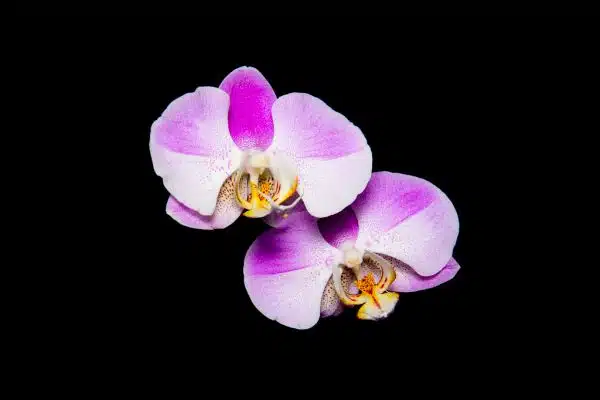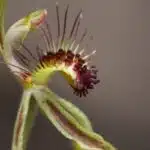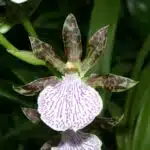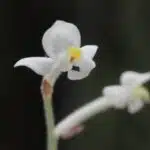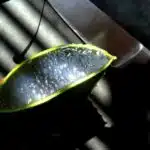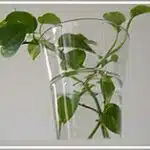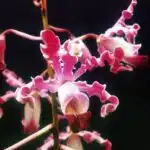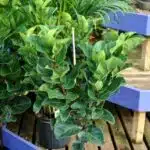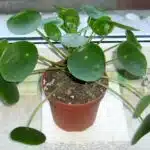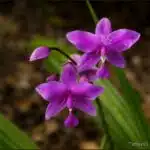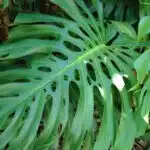Orchids are a popular addition to any household, offering beauty and elegance with their unique and delicate blooms. However, these stunning flowers can be notoriously difficult to propagate, leaving many gardeners feeling frustrated and unsure of how to expand their collection. Fortunately, there are several effective methods for propagating orchids that can help even the most inexperienced gardener achieve success.
In this article, we will explore four different ways to propagate orchids, each with their own advantages and disadvantages. From dividing existing plants to growing new ones from stem cuttings or seeds, we will provide step-by-step instructions and expert tips designed to help you successfully propagate your favorite orchids at home. Whether you are an experienced gardener looking to expand your collection or a beginner hoping to learn more about these fascinating plants, our guide is sure to offer valuable insights and guidance for all of your propagation needs.
Understanding Orchid Propagation
Orchid propagation is an essential part of orchid care. Understanding orchid pollination is crucial to successful propagation. Orchids can be propagated in four different ways: by seed, by division, by keiki (baby plant) and by stem cuttings.
Orchids are unique in the sense that they have a complex pollination process. Unlike other plants that rely on wind or insects for pollination, orchids depend on specific pollinators such as bees, moths, and butterflies. This process is vital to ensure genetic diversity and healthy offspring. Understanding this process is important when propagating orchids because it allows for the selection of compatible parents.
Proper orchid care is also an essential factor in successful propagation. Orchids require specific environmental conditions such as temperature, humidity, light, and water. Providing these conditions not only ensures healthy growth but also encourages flowering and ultimately successful propagation. Neglecting proper care can lead to weak offspring or even death of the parent plant. Therefore, it is crucial to understand and provide optimal growing conditions when propagating orchids.
Understanding orchid pollination and providing proper care are crucial factors for successful propagation. In the next section, we will discuss choosing the right time for propagation to further enhance your chances of success in propagating your orchids.
Choosing The Right Time For Propagation
- Propagating orchids is a process best done at the right time of year, considering the weather and seasonality of the environment.
- When propagating orchids, blooms and buds should be taken into consideration, as well as pollination and photosynthesis.
- During propagation, watering, fertilizing, pruning, and the control of humidity, temperature, soil type, and light exposure should all be monitored to reduce stress on the plant.
- Depending on the variety of orchid, the appropriate timing for propagation may vary greatly and require careful consideration.
Timing
When it comes to propagating orchids, timing plays a crucial role in ensuring successful growth and development. As an expert in the field of orchid propagation, I cannot stress enough the importance of choosing the right time for this process. Best practices dictate that propagation should be done during the growing season when the plant is actively producing new shoots and roots.
However, challenges may arise when trying to determine the best time for propagation. One major factor to consider is the type of orchid being propagated. Some species have specific requirements for propagation and may require a certain temperature or amount of sunlight to thrive. It’s also important to take into account environmental factors such as humidity and rainfall which can affect the growth rate of new plants.
To overcome these challenges, it’s important for growers to do their research and consult with experts in order to determine the optimal time for orchid propagation based on their specific needs. By carefully considering all factors involved and following best practices, growers can increase their chances of success and produce healthy, thriving orchids.
Weather
Choosing the right time for orchid propagation is a crucial factor that can determine the success of producing healthy and thriving orchids. One important consideration in determining the optimal timing is weather conditions. Climate change has brought about extreme weather events, which can significantly affect the growth and development of plants, including orchids.
Extreme weather events such as floods, droughts, frost, and heatwaves can have negative impacts on orchid propagation. Floods can wash away newly planted seeds or cuttings and cause soil erosion that can affect root growth. Droughts can lead to water scarcity that can cause dehydration in plants, while frost and heatwaves can damage the leaves and shoots. Therefore, it’s essential to consider weather forecasts before starting the propagation process.
To overcome these challenges, growers should take appropriate measures to mitigate the effects of extreme weather events. For example, they may need to provide adequate shelter or cover to protect seedlings from heavy rain or hailstorms. They may also need to adjust watering schedules during drought periods or provide shading during heatwaves. By being prepared and adapting to changing weather conditions, growers can increase their chances of successful orchid propagation even in challenging environments.
Preparing Your Materials And Tools
Like a painter preparing their canvas, a successful orchid propagation requires planning and organization. Before diving into the process, it’s important to gather all the necessary supplies and organize your workspace. This will ensure that you have everything you need at hand and minimize distractions during the process.
Gathering supplies involves more than just obtaining the basic tools such as scissors, pruning shears, plant labels, and pots. It also means selecting a suitable potting mix or substrate for your specific type of orchid. Some species require specialized blends of materials such as bark, sphagnum moss, perlite or charcoal for optimal growth. Using the wrong mix can cause damage to the plant and prevent it from thriving.
Organizing your workspace is equally important in ensuring successful propagation. A clean and clutter-free environment can help you stay focused on the task at hand and prevent accidents that could harm both your plants and yourself. It’s also advisable to have a designated area where you can keep all your supplies within reach during the entire process.
Now that we’ve covered how to gather supplies and organize your workspace, let’s move on to method 1: division of existing plants which involves separating an established orchid plant into two or more sections with their own roots system in order to create new individual plants.
Method 1: Division Of Existing Plants
Division of existing orchids is one of the most popular ways to propagate these beautiful plants. It involves dividing a mature orchid into several smaller plants, each with their own roots and stems. The benefit of this method is that it allows you to create new orchids without having to wait for seeds or cuttings to grow.
To divide an orchid, begin by carefully removing it from its pot and gently separating the roots into smaller sections. Each section should have at least one healthy stem and a good number of roots attached. Next, replant each section in its own pot with fresh soil and water thoroughly. The newly divided orchids will require some time to adjust, so it’s important to keep them in a warm, humid environment with indirect sunlight until they have established new growth.
To maintain your divided orchids, be sure to provide them with proper care such as regular watering and fertilization. Keep an eye out for any signs of stress or disease, such as yellowing leaves or wilting stems, and take action promptly if necessary. With proper care, your divided orchids will continue to thrive and may even produce blooms sooner than expected.
Transitioning into the subsequent section about ‘method 2: growing orchids from stem cuttings’, another way to propagate orchids is through stem cuttings. This method involves taking a cutting from a mature plant and encouraging it to grow roots before planting it in its own pot.
Method 2: Growing Orchids From Stem Cuttings
- Stem cuttings are an effective method for propagating orchids that is often used by experienced growers.
- There are four primary types of stem cuttings that can be used for orchid propagation, including tip cuttings, cane cuttings, basal cuttings, and leaf-bud cuttings.
- Before taking stem cuttings, it is important to select healthy, disease-free stems and to use sterile, sharp tools to make precise cuts.
- After taking stem cuttings, they should be allowed to callus and dry out before planting in a well-draining potting medium.
- It is important to keep cuttings in an environment with high humidity and bright, indirect light in order to promote new root growth.
- After new roots have grown, cuttings should be transplanted into individual pots, and then given regular watering and fertilizing schedules to encourage growth and blooming.
Types Of Stem Cuttings
If you’re looking to propagate orchids, stem cuttings are one of the most common methods. This technique involves taking a piece of stem that has a growth node and rooting it in a medium until it grows into a new plant. There are four types of stem cuttings that can be used for orchid propagation: aerial, basal, cane, and tip.
Aerial stem cuttings are taken from the roots or stems above the ground. These pieces will have some leaves attached and should be at least two inches long. It’s important to sterilize your cutting tool before making the cut to avoid introducing any harmful bacteria or fungi. Once you’ve made your cut, remove any leaves or flower spikes from the lower part of the cutting and dip it in a rooting hormone powder. Place the cutting in a medium made up of one part perlite and one part sphagnum moss. Keep it in indirect sunlight and mist it occasionally until roots start to form.
Basal stem cuttings come from near the base of an orchid plant where new growth is forming. These pieces should be about two inches long and have at least one growth node present. Again, sterilize your cutting tool before making the cut and remove any lower leaves or flower spikes. Dip the cutting in rooting hormone powder and place it in a medium made up of one part vermiculite and one part perlite. Mist it every few days until roots start to form.
Cane stem cuttings are taken from mature sections of an orchid’s stem that are no longer producing growth nodes. Cut these sections into two-inch pieces with at least two nodes each, then remove any leaves or flowers from them as well as you did for other types of stem cuts mentioned above. Dip each piece in rooting hormone powder before placing them in a medium consisting of equal parts coarse sand, vermiculite, and perlite mix moistened with water only enough to dampen it. Keep it in indirect sunlight and mist it every few days until roots start to form.
Preparing Cuttings
As a propagation expert, it is important to know the different methods of growing orchids from stem cuttings. Using stem cuttings can be an efficient and effective way to produce new plants, but preparation is key to ensuring success. One of the crucial steps in preparing for stem cutting propagation is sterilization techniques. It’s important to use clean tools when taking cuttings to prevent the introduction of bacteria or fungi that can harm the new plant.
The best tools for taking stem cuttings are sharp and clean scissors or shears. Before using them, sterilize them with rubbing alcohol or a diluted bleach solution to eliminate any potential contaminants. It’s also essential to prepare the medium in which you will root your cuttings. The type of medium will depend on the type of stem cutting you are using, but perlite, sphagnum moss, vermiculite, coarse sand, and perlite mix are commonly used components.
Once your tools and medium are prepared properly, you can move forward with taking your stem cuttings. Careful preparation ensures that your new plants have a healthy start as they develop roots and grow into mature orchids capable of brightening up any space where they’re placed.
Caring For Cuttings
As an orchid propagation expert, it is crucial to have a thorough understanding of the various methods for growing orchids from stem cuttings. In this regard, one important aspect that must be considered is caring for cuttings. Once the cuttings have been taken and rooted in a suitable medium, proper care must be given to ensure their healthy growth and development.
Watering frequency is one of the most important aspects of caring for orchid stem cuttings. It is essential to avoid overwatering or underwatering as both can lead to stress and damage to the new plants. Generally, watering should be done when the soil mixture feels dry to the touch. This will vary depending on factors such as humidity, temperature and soil type.
Soil mixtures are another crucial factor in caring for orchid stem cuttings. The soil mixture should provide adequate drainage while also retaining enough moisture to keep the roots hydrated. Perlite, sphagnum moss, and vermiculite are commonly used components in these soil mixtures, but there are other options available as well. Careful consideration of watering frequency and soil mixtures will help ensure that your new plants grow into mature orchids capable of producing beautiful blooms.
Method 3: Growing Orchids From Keikis
Continuing our exploration of the various methods of propagating orchids, we move on to Method 3: Growing Orchids from Keikis. For those unfamiliar with the term, a keiki is a Hawaiian word meaning “baby” or “child.” In the world of orchids, it refers to a plantlet that grows off the stem or base of an adult orchid. These mini plants are essentially clones of their parent plant and can be removed and grown into mature orchids.
Growing keikis is a simple process that requires patience and attention to detail. First, identify which orchids in your collection are producing keikis. Once you’ve located them, wait until they have several roots at least two inches long before separating them from the parent plant. It’s important to keep the new plantlet hydrated during this process by misting it regularly and keeping it in a humid environment.
Once separated from its parent plant, you’ll need to provide proper care for your keiki. Start by placing it in a container with well-draining potting mix that is specifically formulated for orchids. Remember to water it sparingly and keep it out of direct sunlight until it establishes itself in its new home. With proper care, your keiki will grow into a full-size flowering orchid over time.
Method 4: Growing Orchids From Seeds
Growing orchids from seeds is a challenging but rewarding process. Before starting, it is important to check the seed viability as not all seeds are viable. The germination process can take several months and requires patience and dedication. It is essential to provide optimal growing conditions such as temperature, humidity, and light intensity.
To check seed viability, carefully inspect the seeds for any signs of damage or discoloration. Healthy seeds should be firm and uniform in shape and color. A simple test to check viability involves placing a few seeds in water for 24 hours; viable seeds will sink while non-viable ones will float. If the majority of the seeds sink, they are likely viable and can be used for propagation.
Once you have viable seeds, the germination process begins by sterilizing tools and equipment to prevent contamination. Orchid seeds are tiny and require a sterile environment to grow properly. The germination medium should be moistened with distilled water or rainwater and placed in a warm location with high humidity levels. It may take several weeks or months for the first signs of growth to appear, so it is important to remain patient during this time.
Transitioning into the subsequent section about division propagation: For those who prefer a more straightforward method of propagation, division propagation may be a better option. This method involves dividing an existing orchid plant into smaller sections that can be replanted separately. Follow these simple steps to successfully propagate your orchids using division propagation.
Step-By-Step Guide To Division Propagation
As the saying goes, “there’s more than one way to skin a cat,” and the same holds true for propagating orchids. Understanding plant anatomy is crucial to successful propagation. Orchids have a unique root system that consists of two types of roots: aerial roots and terrestrial roots. Aerial roots absorb moisture and nutrients from the air, while terrestrial roots absorb them from soil or other growing mediums.
There are several benefits to propagating orchids, including creating additional plants for your collection, sharing with friends and family, or even selling them. Propagation also allows you to rejuvenate an older plant that may have stopped producing blooms or grown too large for its current pot. Additionally, it can be less expensive than purchasing a new plant.
Division propagation is one of the easiest ways to propagate orchids. This method involves separating a mature plant into smaller sections that each have their own set of leaves and roots. It’s best done when repotting a plant or after it has finished flowering. Once divided, each section can be planted in its own pot with fresh growing medium. With proper care and attention, these newly propagated plants will grow into healthy specimens in no time!
Transitioning into the subsequent section about stem cutting propagation: Now that you understand how division propagation works let’s explore another popular method – stem cutting propagation.
Step-By-Step Guide To Stem Cutting Propagation
- Before attempting stem cutting propagation, the cutting should be prepared by selecting healthy stems, removing any flowers or leaves, and trimming them to the desired length.
- The cuttings should then be inserted into a potting medium that is well-draining and free from any potential pathogens.
- To ensure successful rooting of the cutting, it is important to keep the soil moist and to provide adequate humidity by using a humidity dome or misting the leaves.
- To provide the cutting with necessary nutrients, foliar feeding can be employed by spraying the leaves with a diluted liquid fertilizer.
- The cutting should be kept out of direct sunlight and at a temperature of approximately 70°F (21°C).
- After a few weeks, the cutting should show signs of new growth and root development, at which point it can be transplanted into a larger pot.
Preparing The Cutting
As orchid propagation experts, we understand the importance of preparing the cutting before propagating it. To successfully propagate orchids through stem cutting, one must have ample knowledge about the tips for pruning and understanding root systems. Before taking a cutting, make sure to sterilize your tools to prevent any possible infection.
When pruning an orchid plant, you should look for a healthy stem that is at least 6 inches long with several nodes or joints. Once you have identified the right stem, use sharp scissors or a blade to cut it just below a node or joint. Remember to remove any leaves or flowers from the lower portion of the stem to avoid rotting after planting. Understanding root systems is also crucial in preparing cuttings since roots are responsible for water and nutrient uptake in plants. Make sure to leave at least two nodes above the soil level when planting the cutting to encourage new growth and root development.
In summary, proper preparation of cuttings is essential for successful propagation of orchids through stem cutting. By following these tips for pruning and understanding root systems, you can ensure that your cuttings have a higher chance of survival and growth potential. Take extra care when handling your tools and always strive for cleanliness in all aspects of propagation to avoid any possible infections that may harm your plants in the long run.
Inserting The Cutting
After preparing the orchid cutting, the next step is to insert it into a suitable growing medium. Before planting, it’s essential to understand the inserting techniques and cutting care that will help ensure its success. The first thing you should do is create a small hole in the growing medium using a pencil or stick. The hole should be deep enough to accommodate at least two nodes of the stem cutting.
When inserting the cutting, make sure that it fits snugly into the hole and stands upright without any support. You can use your fingers to gently press down on the soil around the stem to keep it securely in place. It’s important to note that too much pressure can damage or break delicate roots, so be gentle when pressing down.
Once you have inserted the cutting, water it thoroughly until excess water drains out from the bottom of the pot. Make sure not to overwater as this can cause root rot and other issues with growth. To care for your newly planted orchid cuttings, keep them in a warm and humid environment with indirect sunlight for several weeks until they develop new growth. With proper care and attention, your orchid cuttings will thrive and produce beautiful blooms for years to come!
Caring For The Cutting
Caring for the cutting is an essential step in stem cutting propagation to ensure that your orchid cuttings thrive and reach their full potential. After planting, it’s crucial to provide proper care and attention to promote healthy root development and growth. There are several caring techniques that you should follow to ensure success.
One of the most critical aspects of caring for your orchid cuttings is watering. You must water them regularly but not too much, as overwatering can lead to root rot and other issues. To avoid this, make sure that the growing medium is moist but not soaking wet. Additionally, you can mist the leaves regularly to keep them hydrated.
Another important aspect of caring for your orchid cuttings is providing appropriate lighting conditions. Orchids require indirect sunlight to grow properly, so make sure they are placed in a warm and humid environment with adequate light exposure. Be careful not to expose them directly to sunlight as this can burn delicate leaves and damage growth.
In summary, caring for your orchid cuttings is crucial for successful stem cutting propagation. By following these techniques and providing adequate water and lighting conditions, you can promote healthy root development and growth. With patience and attention, you will soon see new growth on your orchid cuttings, leading to beautiful blooms in the future.
Step-By-Step Guide To Keiki Propagation
After mastering stem cutting propagation, orchid enthusiasts can move on to another method called Keiki propagation. Keiki is a Hawaiian word that means “baby” and it refers to the plantlets that grow on the stem of an orchid. This method is ideal for those who want to create new plants without sacrificing their mature ones.
To start with Keiki care, it’s important to look for a healthy orchid with strong roots and at least one node on its stem. Once you’ve identified a suitable candidate, position it in bright but indirect sunlight and keep the temperature between 65-80°F. Water the parent plant regularly and mist the Keiki every day until its roots are well-established.
Orchid potting techniques also play a crucial role in ensuring successful Keiki propagation. It’s recommended to use a mixture of sphagnum moss or coconut coir and perlite for better drainage and moisture retention. When potting, make sure not to bury the Keiki too deep into the soil as this can lead to rotting. Instead, anchor it onto the surface of the mixture using clips or stakes until it establishes strong roots.
Moving forward from Keiki propagation, our next method will be discussed in detail – seed propagation. This technique may take more time and effort but provides a rewarding experience for those who want to witness an orchid’s life cycle from seedling to maturity. By following specific steps, you can achieve success in growing your very own orchids from scratch.
Step-By-Step Guide To Seed Propagation
As an orchid propagation expert, one of the most exciting and rewarding ways to propagate orchids is through seed propagation. Understanding seed germination is key to successful orchid propagation. Orchid seeds are incredibly small and delicate, making them challenging to handle. However, with proper care and patience, you can successfully grow your own orchids from seed.
Before beginning the process of seed propagation, it’s important to know the best practices for orchid seed storage. Orchid seeds have a relatively short shelf life and need to be stored in a cool, dry place. Storing them in a sealed container with silica gel packets can help prevent moisture buildup that could lead to mold growth or rotting. It’s also important to keep track of the age of your seeds as older seeds may have lower viability rates.
To begin the process of seed propagation, you’ll first need to gather the necessary materials such as sterile containers, planting medium, and a sterile workspace. The planting medium should be moist but not too wet as excess moisture can lead to fungal growth which could harm the delicate young plants. Once you’ve carefully sown your seeds onto the surface of the planting medium, cover them with a thin layer of sphagnum moss or another suitable material.
By understanding proper seed germination techniques and best practices for orchid seed storage, you can successfully grow your own beautiful orchids from scratch. In our next section, we will discuss tips for successful orchid propagation that will help ensure healthy growth and vibrant blooms for years to come.
Tips For Successful Orchid Propagation
Orchid division is the process of separating a single orchid plant into multiple plants. Air layering is suitable for propagating large-leaved orchids and is a method of inducing roots to form on a stem while still attached to the parent plant. Stem cuttings involve cutting a stem from an existing plant and rooting it in a potting medium. Seed germination is a slow process that may take up to several months, requiring specific environmental conditions such as temperature, light and humidity.
Orchid Division
Orchid division is a method of propagation that involves separating the mother plant into smaller sections, each with its own set of roots and leaves. This process promotes healthier growth by allowing more space for new roots to develop and absorb nutrients. Additionally, dividing orchids can help prevent overcrowding and allow for better air circulation, which reduces the risk of disease or pest infestations.
To successfully divide an orchid, it is important to follow a few best practices. First, choose a healthy plant that has at least three or four pseudobulbs (swollen stems where the leaves attach) and several new growths. Next, use sterilized tools to carefully separate the plant into sections, making sure each piece has enough roots and foliage to sustain itself. Finally, replant each section in a clean pot with fresh potting mix and water thoroughly.
The benefits of division are numerous, including increased plant health and vitality as well as the opportunity to create multiple plants from one mother plant. With proper care and attention, divided orchids can thrive for years to come, bringing joy and beauty to any home or garden setting.
Air Layering
Successful orchid propagation requires different techniques, and air layering is one of them. This method involves inducing roots to grow on a stem while it is still attached to the mother plant. Air layering can be used for rejuvenating old plants, promoting branching, or creating new plants from existing ones. It is especially useful for orchids with long stems that have become bare at the bottom.
To perform air layering, select a healthy stem and make a pruning cut below a node or leaf. Then, make a second cut above the first one, leaving about an inch between them. Next, apply rooting hormones to the exposed area, wrap it in moist sphagnum moss or peat moss, and cover it with plastic wrap or foil. The enclosed area should be kept moist and warm until roots are visible through the plastic wrap.
After roots have developed sufficiently, detach the new plant from the mother plant by making another pruning cut below the root ball. Replant it in fresh potting mix and provide adequate humidity and light until it establishes itself. Air layering allows growers to propagate orchids without disturbing their root systems or risking infection from cutting tools. With proper care, these newly propagated orchids can thrive just as well as those grown from seeds or divisions.
Common Mistakes To Avoid
Successfully propagating orchids requires patience, knowledge, and skill. As outlined in the previous section, there are several tips to keep in mind when propagating orchids, such as using sterile tools and selecting the right potting mix. However, there are also common mistakes that can be made during the process. In order to ensure successful propagation of your orchids, it is important to avoid these missteps.
One common mistake made during orchid propagation is overwatering. Orchids require a delicate balance of moisture and air circulation to thrive. Overwatering can lead to root rot and other issues that can ultimately kill your plant. To prevent overwatering, make sure you are using well-draining potting mix and only water when the top inch of soil is dry to the touch.
Another important factor in successful orchid propagation is proper lighting techniques. Orchids require bright but indirect light in order to grow and thrive. Direct sunlight can cause damage or even burn their leaves, while insufficient lighting will stunt growth or prevent flowering altogether. Make sure your orchids are receiving adequate light by placing them near a north-facing window or providing supplemental artificial light.
To summarize, preventing overwatering and providing proper lighting techniques are key factors in successfully propagating orchids. By avoiding common mistakes such as these, you can increase your chances of growing healthy orchids that will thrive for years to come. In the next section, we will discuss troubleshooting common issues that may arise during the propagation process so that you can address any problems quickly and efficiently.
Troubleshooting Common Issues
Preventing diseases is a crucial aspect of orchid propagation. The most common disease affecting orchids is root rot, caused by overwatering or poor drainage. To prevent this, ensure that the potting medium is well-draining and only water the plant when the top inch of soil feels dry to the touch. Another way to prevent diseases is to regularly clean your tools and sterilize them with rubbing alcohol before use.
Pests can also be a nuisance in orchid propagation. Common pests include spider mites, mealybugs, and scale insects. To prevent pest infestations, inspect your plants regularly and isolate any infected plants immediately. Use insecticidal soap or neem oil to treat minor infestations, but for severe cases, it may be necessary to use a systemic pesticide.
Common maintenance mistakes can also impact the success of your orchid propagation efforts. One mistake is not providing enough light for your plants. Orchids require bright but indirect light to thrive, so ensure that they are placed near a window with filtered sunlight or under grow lights. Over-fertilization is another mistake to avoid as it can cause damage to the roots and leaves of your plants.
| Issues | Prevention |
|---|---|
| Root Rot | Ensure well-draining potting medium; water only when top inch of soil is dry |
| Pests | Regularly inspect and isolate infected plants; use insecticidal soap or neem oil for minor infestations |
| Maintenance Mistakes | Provide adequate but indirect light; avoid over-fertilization |
Now that you know how to propagate orchids in four different ways and how to troubleshoot common issues during the process, you can confidently care for your beautiful new additions! By preventing diseases through proper watering techniques and regular tool sterilization, avoiding pest infestations through regular inspections and treatment when necessary, and taking care not to make common maintenance mistakes such as inadequate light or over-fertilization, you can ensure that your orchids thrive. In the next section, we will discuss how to enjoy your beautiful orchids and continue to care for them over time.
Conclusion: Enjoying Your Beautiful Orchids
Just like how a conductor harmonizes an orchestra, caring for orchids can be a symphony of sorts. Each element must work together in perfect synchronization to create a beautiful display. But don’t worry, it’s not as daunting as it sounds! With proper care and attention, your orchids will thrive.
To start, make sure to place your orchids in the right location. They need adequate light but not direct sunlight. The temperature should also be just right – not too hot or too cold. Watering is another crucial aspect of caring for orchids. Overwatering can lead to root rot while underwatering can cause dehydration. Finding the right balance may take some practice, but it’s worth it for healthy and vibrant blooms.
Finally, when it comes to displaying your orchids, the possibilities are endless! You can arrange them in a traditional pot or try something more creative like mounting them on driftwood. A grouping of different colored orchids can create a stunning focal point in any room. And don’t forget about accessorizing with decorative rocks or moss.
With these tips and tricks, you’ll be well on your way to enjoying your beautiful orchids for years to come! So go ahead and experiment with different care techniques and display ideas until you find what works best for you and your plants. Your dedication will surely pay off with stunning blooms that bring joy to all who behold them.
Conclusion
Orchid propagation can be a rewarding and exciting journey for any plant enthusiast. Understanding the process is crucial before starting the propagation of orchids. The four methods discussed in this article are division of existing plants, growing orchids from stem cuttings, growing orchids from seeds, and keiki propagation. Each method has its unique advantages and disadvantages.
Choosing the right time for propagation is essential to ensure that your orchids thrive. Before starting, it’s important to prepare all the necessary materials and tools. Following the correct procedure will help increase your chances of success.
As an expert in orchid propagation, I advise that you avoid common mistakes such as overwatering or underwatering, using contaminated tools or materials, and improper sterilization techniques. Troubleshooting common issues such as root rot or fungal infections is also essential to ensure the health of your orchids.
In conclusion, propagating orchids can be a challenging yet fulfilling experience for any green thumb out there. Remember to follow the proper techniques and procedures while avoiding common mistakes to achieve success in your endeavors. Finally, enjoy watching your beautiful orchids grow and flourish!
Image Credits
- “Orchid” by Seokhee Kim (featured)

